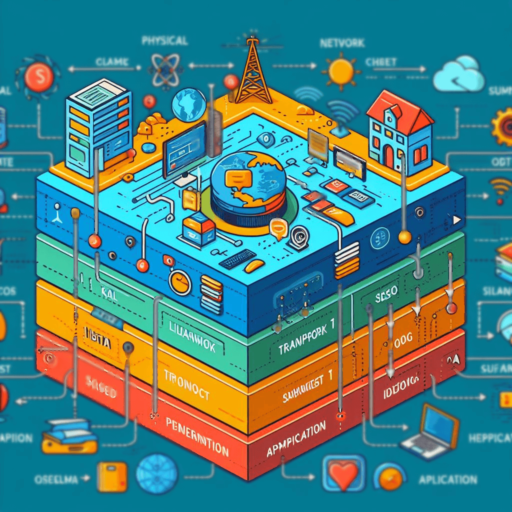Introduction to the OSI Model
The Open Systems Interconnection (OSI) model is a conceptual framework that standardizes the functions of a telecommunication or computing system into seven distinct layers. Each layer serves a specific purpose, allowing devices to communicate seamlessly across networks.
Layer 1: Physical Layer
The Physical Layer, the first layer of the OSI model, deals with the physical connection between devices. It includes specifications for cables, connectors, voltage levels, and physical data rates.
Layer 2: Data Link Layer
The Data Link Layer provides error-free transfer of data frames between nodes over a physical link. It ensures data integrity and manages access to the physical medium. Common protocols at this layer include Ethernet and Wi-Fi.
Layer 3: Network Layer
The Network Layer is responsible for routing packets from the source to the destination across multiple networks. It handles logical addressing and determines the best path for data to travel. Internet Protocol (IP) operates at this layer.
Layer 4: Transport Layer
The Transport Layer ensures reliable and transparent data transfer between end systems. It segments and reassembles data packets, performs error detection, and controls the flow of data. Transmission Control Protocol (TCP) operates at this layer.
Layer 5: Session Layer
The Session Layer establishes, manages, and terminates connections between applications. It synchronizes dialogue between systems and provides mechanisms for checkpointing and recovery.
Layer 6: Presentation Layer
The Presentation Layer translates data between the application and the network format. It handles data encryption, compression, and formatting for efficient transmission across the network.
Layer 7: Application Layer
The Application Layer provides network services directly to end-users. It enables communication between applications and facilitates functions such as file transfers, email, and web browsing.
Understanding the OSI Model’s Structure
The OSI model follows a hierarchical structure, with each layer building upon the functionalities provided by the layers below it. This modular approach allows for easier troubleshooting, maintenance, and implementation of new technologies.
The Importance of the OSI Model
The OSI model serves as a universal reference for understanding network architecture. It promotes standardization, interoperability, and compatibility among different vendors’ networking equipment and protocols.
Common Protocols Associated with Each Layer
Examples of protocols associated with each OSI layer include Ethernet (Layer 2), IP (Layer 3), TCP (Layer 4), HTTP (Layer 7), and many others. These protocols define how data is formatted, transmitted, and received across networks.
Real-world Applications of the OSI Model
In real-world networking scenarios, the OSI model guides the design and implementation of network infrastructure. It helps engineers troubleshoot issues, plan network upgrades, and ensure optimal performance and security.
Challenges and Limitations of the OSI Model
Despite its widespread adoption, the OSI model has faced criticism for being overly complex and not directly applicable to modern networking technologies, such as cloud computing and software-defined networking.
Future Prospects and Evolution
As networking technologies evolve, the OSI model continues to adapt to new challenges and requirements. Its principles of layering and modular design remain relevant, providing a foundation for the development of future networking standards.
Conclusion
The OSI model provides a structured framework for understanding the complexities of networking systems. By breaking down the communication process into seven distinct layers, it enables interoperability, standardization, and seamless connectivity across diverse network environments.
FAQs
- What is the OSI model?
- The OSI model is a conceptual framework that standardizes the functions of a telecommunication or computing system into seven layers.
- Why is the OSI model important?
- The OSI model promotes standardization, interoperability, and compatibility among different vendors’ networking equipment and protocols.
- What are some examples of protocols associated with each OSI layer?
- Examples include Ethernet (Layer 2), IP (Layer 3), TCP (Layer 4), and HTTP (Layer 7).
- What are some challenges of the OSI model?
- The OSI model has faced criticism for being overly complex and not directly applicable to modern networking technologies.
- How does the OSI model adapt to evolving networking technologies?
- The OSI model continues to evolve to meet the demands of modern networking technologies, providing a foundation for the development of future standards.
Do you like to read more Blog content? Read our blogs at PintoraBlogs

